We’ve all heard about the festivals of India, but do you also know about classical dances? On a national level, there are six classical dances that are recognised by the Sangeet Natak Akademi which include Bharatnatyam, Kathak, Kathakali, Manipuri, Kuchipudi and Odissi. These dances date back to ancient times and are a form of discipline and art to devote oneself to God. Each dance symbolises a deep meaning and establishes a significant connection to the culture, history and religion. Here is what you should know about all the important classical dances of India as well as other popular dance forms.
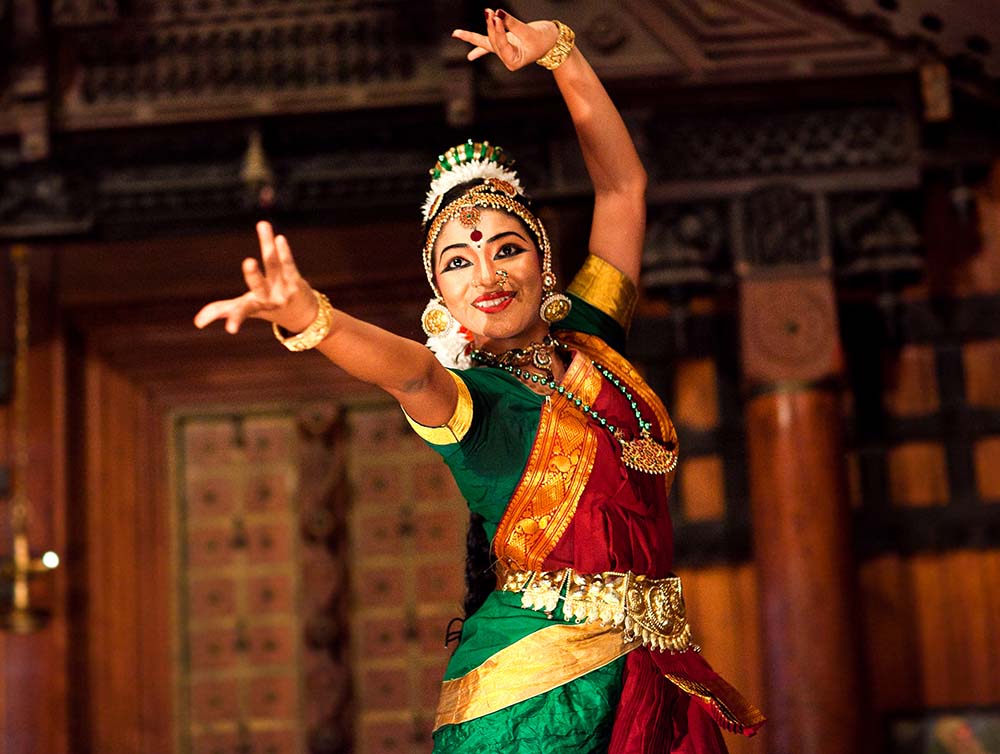
Bharatnatyam
State of Origin: Tamil Nadu
With a history that traces back to 1000 BC, this beautiful dance form is performed with Carnatic music. The roots of this dance go back to the ancient temples in which women performed the dance. The beautiful gestures and body movements are termed ‘mudras’. Bharatnatyam dance form is considered one of the most revered forms of art in India. In South India, it is a very proud moment for women to learn this classical dance form. The theoretical base of Bharatnatyam is based on the Sanskrit Hindu text, ‘Natya Shastra’. The repertoire of the dance includes ‘nrita, nritya and natya’. Traditionally, the accompanists include music, a singer and a guru who directs the performance of the dancer. Some of the famous Bharatnatyam artists in India include Mallika Sarabhai, Mrinalini Sarabhai, Yamini Krishnamurthy, Padmasubramaniam and Alarmel Valli.
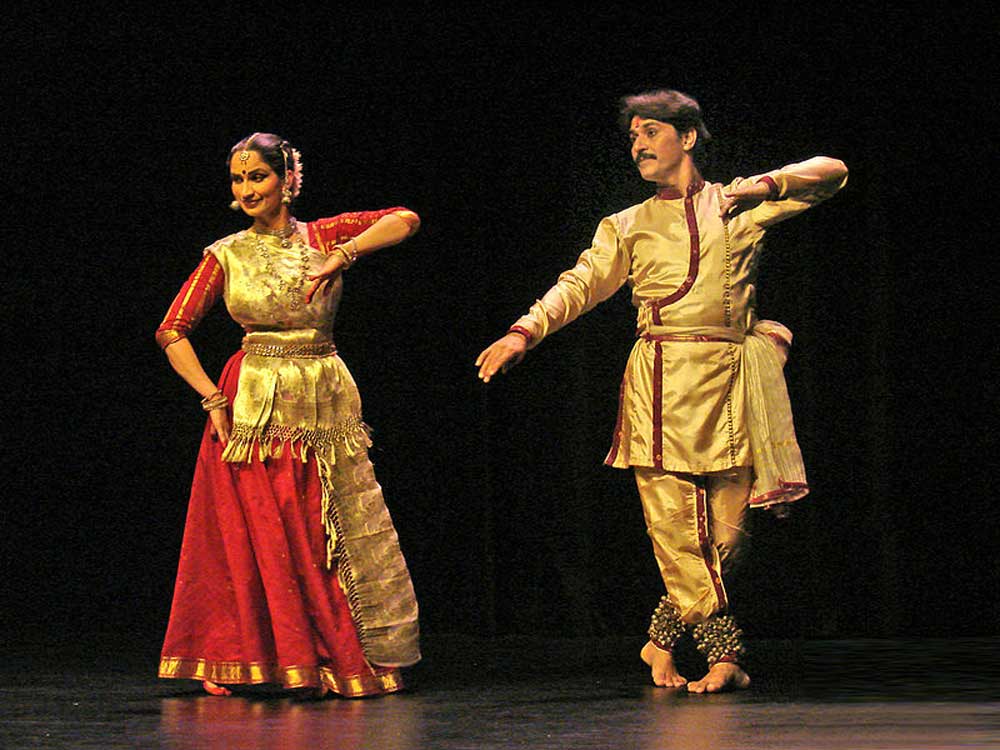
Kathak
State of Origin: Uttar Pradesh
The name of the dance form, Kathak, is derived from ‘Katha’ which stands for ‘story’. Kathak is also one of the widely popularised dance forms in Bollywood. Traditionally, the dance is believed to have originated from the travelling poets of North India who would deliver legendary stories through dance, music and songs. Therefore, the storytelling is done by the dancer through body movements. There are three specific forms of Kathak, referred to as ‘gharanas’, the famous being Lucknow gharana, Jaipur gharana and Benaras gharana. One of the most popular dance forms of India, Kathak can also be performed by a male and a female dancer together, for which it is also addressed as ‘dance of love’. ‘Ghunghroos’ or the ‘ankle bells’ are an important discipline of this classical dance. A few of the noted Kathak artists in India are Maya Rao, Roshan Kumari, Kumudini Lakhia and Shovana Narayan.
Kathakali
State of Origin: Kerala
One of the most important and popular Indian dance forms, the storytelling in Kathakali is beautifully performed with notable footwork, facial gestures and hand movements along with music and vocal performance called Soppannam. Kathakali is organised around ‘Attakatha’. Easily distinguishable from all the other classical dance forms of India, Kathakali makeup, face mask and costume are very intricate that require the artist to get ready for three hours. The history of this dance form dates back to the first millennium CE or maybe before. It is believed to have originated from temples, folk arts, Shiva and Ramayana stories. It is fascinating to see tales from Hindu mythology between the dancers simply through their facial expressions and body gestures. Some of the famous Kathakali dancers in India include Kalamandalam Vasu Pisharody, Kalanilayam Balakrishnan, Kalamandalam Krishna Prasad, Kalamandalam Kesavan Namboodiri.
Kuchipudi
State of Origin: Andhra Pradesh
Kuchipudi dance form is considered as good as a religious ceremony. This dance-drama performance art is conducted by a Sutradhar. The repertoire of Kuchipudi includes ‘Nritta’, ‘Natya’ and ‘Natya Shastra’. The male dancer wears a dhoti while the female dancer wears a colourful saree as a costume. The music accompanied by this dance besides the vocalist includes a veena player, a mridangam player, and a cymbal player who directs the orchestra and recites the ‘sollukattus’. Previously, the dance was limited to performance by male Brahmins only, however, these days it is the female dancers who perform mostly. Kuchipudi is considered one of the toughest classical dance forms as it requires dancing and singing both by the performer backed by a lot of skill and dedication. Some of the eminent Kuchipudi dancers include Raja and Radha Reddy who have an international presence, Kaushalya Reddy, Yamini Reddy, Bhavana Reddy, and Lakshmi Narayan Shastri among others.
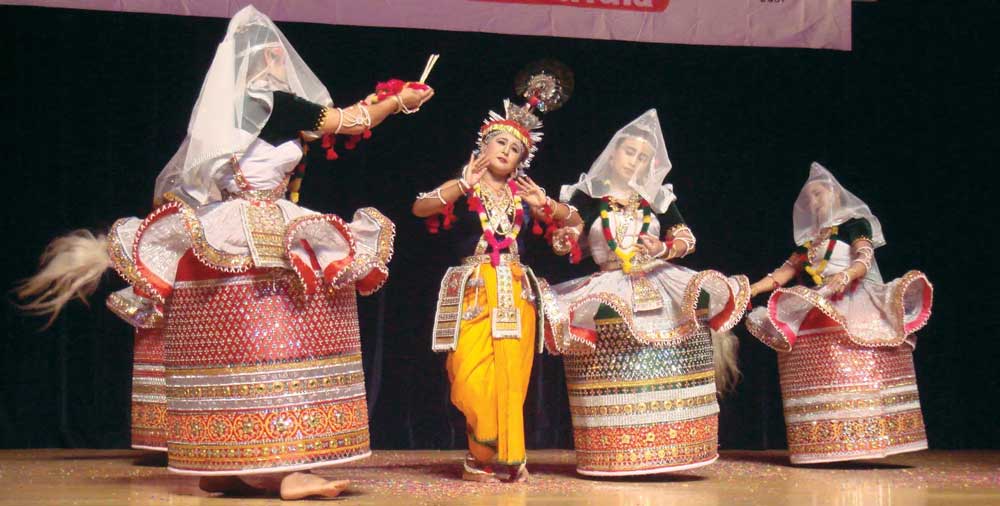
Manipuri
State of Origin: Manipur
Manipuri dance is primarily based on Vaishnavism, depicting the bond of love between Radha and Krishna and the graceful performance of ‘Ras Leela’. A mix of Indian and south-east Asian cultures is easily discernible in this dance form. This dance is performed during Hindu festivals. The dance performers are called ‘Gandharvas’ with reference to the Hindu epics of ‘Ramayana’ and ‘Mahabharata’. This beautiful classical dance is performed wearing unique costumes to narrate the tale of Radha and Krishna. The male dancer wears a ‘dhoti’ or ‘dhora’ while the female dancer wears a ‘Potloi’ which is similar to the attire of a Manipuri bride. Interestingly, the repertoire of Manipuri dance revolves around seasons. One of the most graceful Indian dance forms, the movements used are very gentle and lyrical Some of the famous Manipuri dancers include Guru Bipin Singh, his student Darshan Jhaveri, and her sisters Suverna, Nayana, Ranjana, and Devyani Challi, Charu Mathura among the rest.
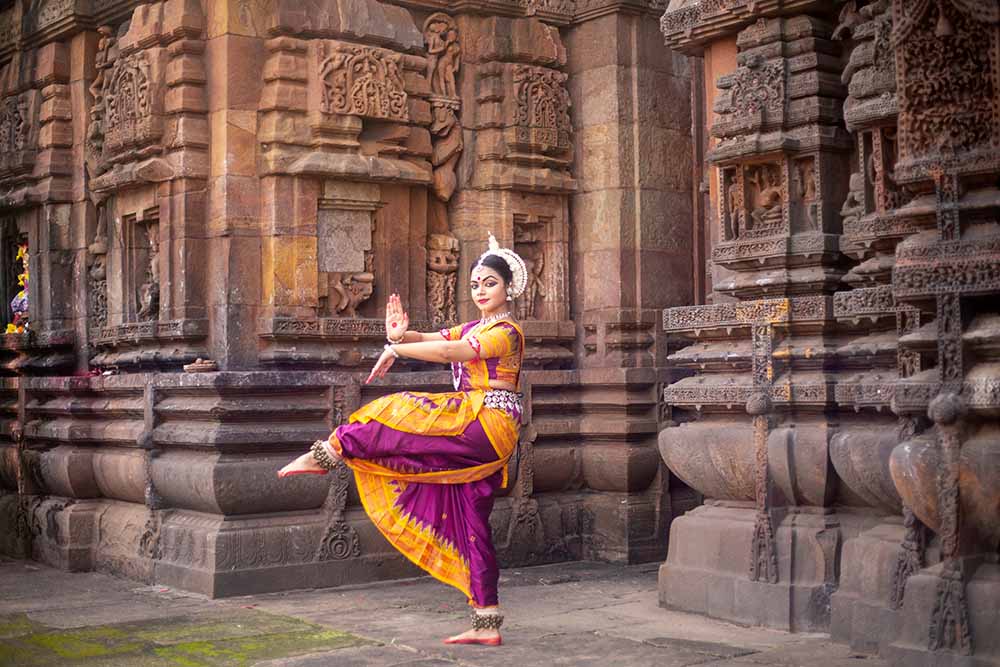
Odissi
State of Origin: Orissa
One of the oldest classical dance forms of India traces back to Hindu temples in Orissa. The Odissi dancers emote devotional poems, religious and mythical stories with graceful body movements, sign language, and impressive facial expressions. The ‘mudras’, as many as 50 in number, are inspired by the idols and sculptors in ancient temples. The repertoire involves a sequential flow that includes an invocation, nrita, nritya, natya and moksha. The costumes of female dancers are made in local silk sarees like the Bomkai saree and Sambalpuri saree. The male dancers wear a neatly pleated dhoti. A unique feature of the Odissi dance form is that its music includes Southern and Northern Indian ragas using a variety of instruments such as a table, sitar, flute, cymbals, violin, pakhawaj and harmonium. Some of the famous Odissi dance performers include Sonal Mansingh, Sanjukta Panigrahi, Aruna Mohanty, and Kumkum Mohanty.
Mohiniyattam
State of Origin: Kerala
As per Hindu mythology, Mohini symbolises the female version of Lord Vishnu and ‘Attam’, a Malayalam word that means rhythmic motion, therefore signifying the dance of the divine temptress. Mohiniyattam and Kathakali are the two most popular classical dances of Kerala. Usually, the dance is performed by a female in Manipravala language which is a blend of Sanskrit and Malayalam. The repertoire of this dance includes Carnatic music, singing and play. This style of dance is referred to as the ‘Lasya’ type which is graceful and feminine. There is one part that also depicts ‘Tandava’, the divine dance of Lord Shiva. The recitation can either be performed by the vocalist or the dancer herself. The dancer adorns an off-white sari bordered with gold-laced brocade. Some of the famous names of Mohiniyattam dance performers include Gopika Varma, Radha Dutta, Smitha Rajan, Vijaylaxmi, and Jayaprabha Menon.
Indian Folk Dance
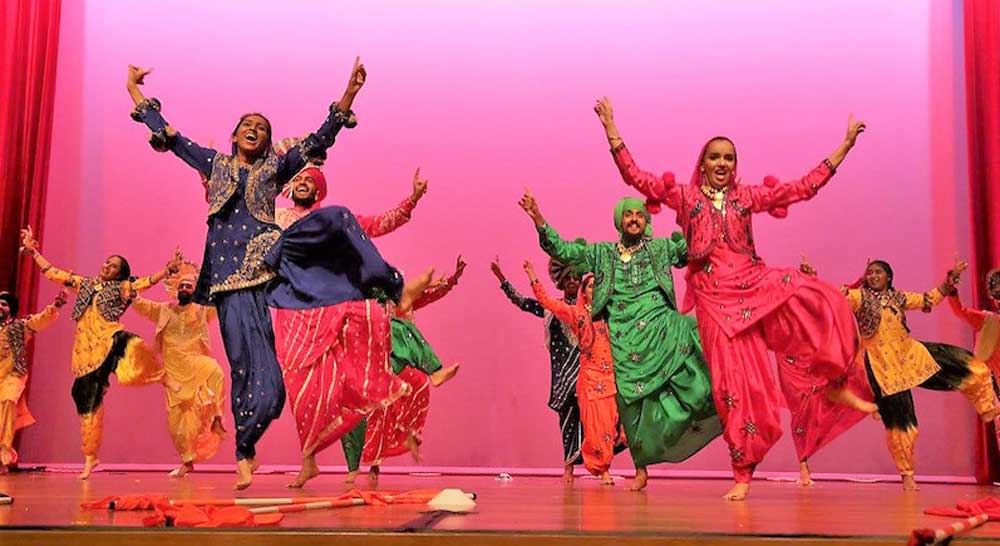
Bhangra/Gidda
State of Origin: Punjab
Bhangra, an internationally renowned folk dance of Punjab, this Indian dance form is essentially performed during the occasion of ‘Baisakhi’ and all the festivals. ‘Bhangra’ is an extremely energetic and enthralling dance with various athletic feats and tricks. The costume includes bright coloured dhoti, kurta and turbans. The setup of Bhangra revolves around a drummer who plays the ‘dhol’ in the centre surrounded by the rest of the dancers. Gidda is also a folk dance from Punjab that is performed by a woman or two women dancing while others surround them and clap in rhythm. The dance is usually performed during the festival of Teeyan to welcome the monsoon.
Sattriya
State of Origin: Assam
The history of this dance in India dates back to the 15th century AD, Sattriya was introduced by a reformer and a Vaishnav saint named Mahapurusha Sankaradeva. Yet another form of dance that focuses on delivering mythological teachings. The Sangeet Natak Akademi included Sattriya in the category of classical dances in the year 2000. The music is called Borgeet, which is Assamese and the dance comprises ‘ankiya bhaona’ and Ojapali in which the singer acts and sings with a group of dancers who play cymbals. Sharodi Saikia and Guru Jatin Goswami are famous Sattriya dance performers in India.
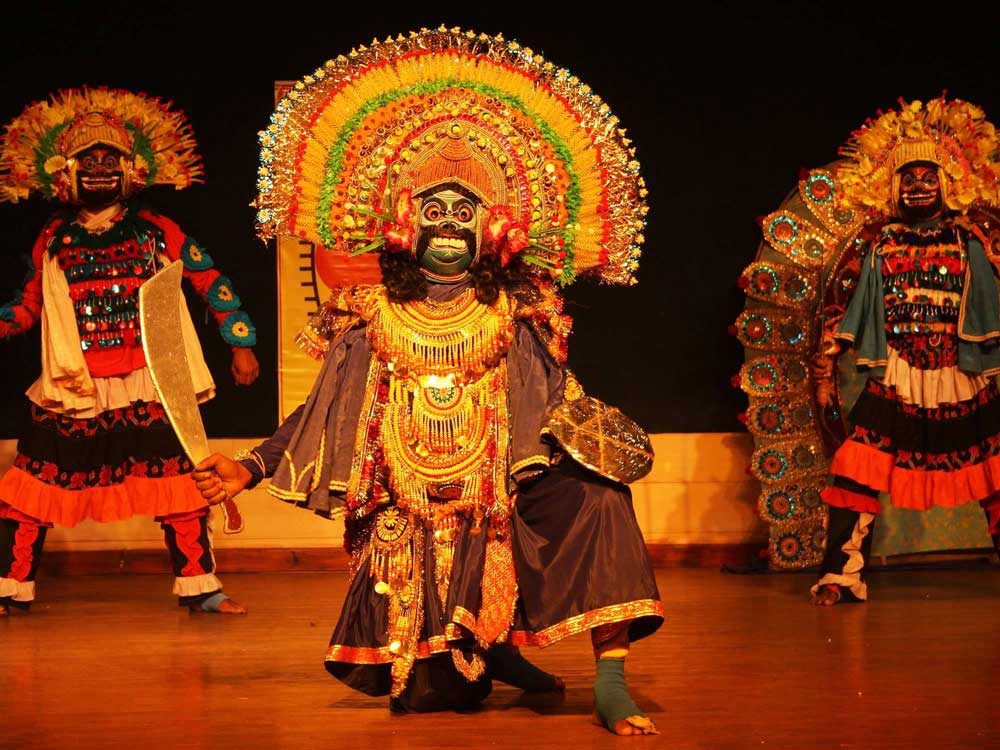
Chhau
State of Origin: West Bengal
Eastern Indian folklore, abstract themes, and scenes from epics like the Mahabharata and Ramayana are enacted in this chhau dance form. It has three main styles—the first two of which use masks—come from the regions of Seraikella, Purulia, and Mayurbhanj. Regional celebrations, particularly the spring festival Chaitra Parva, are closely associated with chhau dance. It’s roots can be found in indigenous dance and martial arts traditions. It’s range of motions includes movements based on housewife tasks in rural areas, stylised animal and avian gaits, and simulated combat methods. Male dancers from nearby towns or the families of traditional artists are trained in chhau. The dance is done at night in an open area to traditional and folk melodies played on reed pipes mohuri and shehnai.
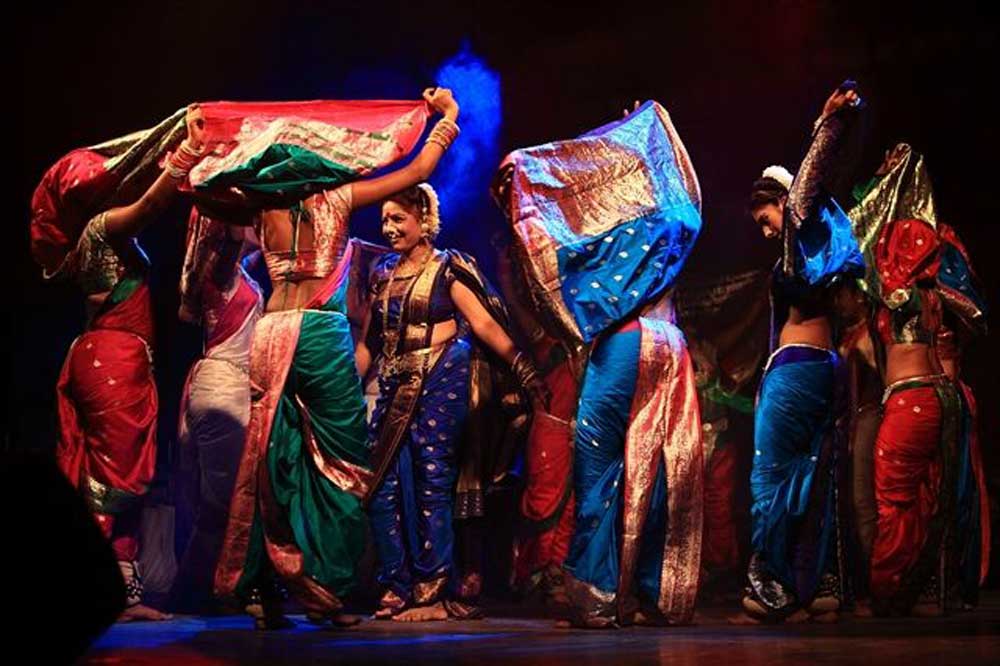
Lavani
State of Origin: Maharashtra
When Maharashtra was engulfed in violence and unrest in the 18th and 19th centuries, the Lavani dance form originated as a means of boosting the spirits of warring troops. The Peshawari Dynasty, which had its capital in Pune, was the period when the dance form reached the peak of its popularity, thanks to the support given by the ruling elite. In the Sholapur district of Maharashtra, Dhangars, or shepherds, are typically the ones that perform the Lavani dance. The dance form tells stories of the birth of their deity, Biruba, and they are inspired by nature. Lavani is a combination of song and dance commonly associated with Maharashtra as well as in Konkan and coastal regions. Lavani is derived from the word ‘Lavanya’ which means ‘beauty’. The dance form aims to offer diverse facets of society—like politics, religion, romance, and so forth—in an engaging way.
It is performed by women to the rhythms of a Dholak (Indian drum). The Dholak is frequently accompanied by additional instruments, such as a harmonium, a Daf—a single-leather instrument that resembles a tambourine—a string instrument known as a Tuntuni, and a cymbal called the Manjeera.
Bihu
State of Origin: Assam
Assamese tradition includes the Bihu dance, and the celebration of this diversity fosters solidarity among the state's citizens. The sounds of the dhol (drum) and pepa (flute) fill the banks of the Brahmaputra during the celebration. The dancers circle each other and start off at a slower pace before picking up speed. Musical accompaniment is provided by hornpipes, harps, bamboo clappers, cymbals, and drums. Despite the dance's agricultural origins, a romantic and loveable mood is created by the music and the elegant dancing. The dance form has garnered recognition for upholding authenticity while showcasing the exquisite beauty and magnificence of traditional Assamese handlooms and handicrafts. The women's outfit includes a Lagu Richa (chaddar), an Agoo (mekhala), and a Gitigee (kind of headpiece). Their accessorise with lovely jewels. The guys are dressed in a shirt, a dhoti, and a gomocha (towel).

Rouf
State of Origin: Jammu & Kashmir
The most well-known traditional and folk dance of Jammu and Kashmir is the rouf dance. This dance is performed in the spring, particularly for Ramadan and Eid. The women in gorgeous, vibrant gowns put on an amazing show. Originally performed to commemorate the arrival of spring and to heighten the celebratory mood, especially on Id-ul-Fitr, the Rouf dance began among the Muslim community. The women all come together by doing the Chakri, or basic steps. Women accessorise their Salwar Kameez with the exquisite Kassab scarf. During harvest season, women would dance to lyrical music while donning traditional silver jewellery. The song is sung rhythmically as one group asks questions and the other group responds to it.
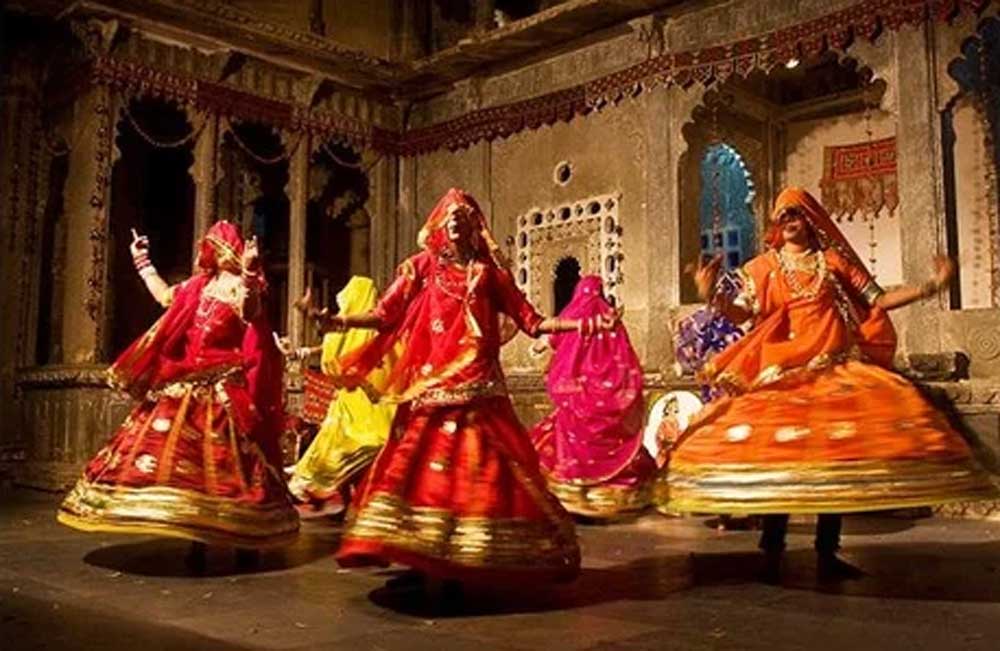
Ghoomar
State of Origin: Rajasthan
The Ghoomar is a vibrant and traditional folk dance from Rajasthan. The Bhil tribe essentially came up with this dance form which was later embraced by other Rajasthani clans. The Ghoomar is a women’s dance performed by women during exclusive women gatherings. It is performed in groups, swaying in a circle while wearing twirling robes, as men and women sing together. The name of this amazing folk dance comes from ‘ghoomna.’ Colours of the flowing ‘ghaghara,’ Rajasthani women's long skirt, which flow during pirouetting, arouse fascination. The women spin in circles, their faces shielded by the veil, with a breathtaking grace as the skirt gently flares.
Conclusion
India has a tradition of arts, culture and dances that are thousands of years old. The Indian dances have marked their presence on the globe and have garnered immense respect for their invaluable essence. The ‘mudras’ are a common expression among all dance forms and these were originally performed in the temples as a form of worship to Gods and Goddesses. Over a period of time, these dances evolved and became more inclusive of themes related to social life and real experiences. The dances of India do not only entertain the audience but have played an effective role in carrying the legacy of storytelling from the Great Epics. These dances were included in ‘Natya Shastra’ for compilation. India is synonymous with arts and culture and these classical and folk dances add life to it in the most graceful and impressive way.
FAQs
Which are the classical dances of India?
Bharatnatyam, Kathak, Kathakali, Kuchipudi, Manipuri, Odissi, Sattriya and Mohiniyattam are the 8 classical dances of India.
Why do classical and folk dances play an important role?
Classical dances and folk dances are a part of the performing arts. They are a way of devotion, expression and art that requires immense skill and hard work.
What is the hardest dance form in India?
Kuchipudi is considered one of the most challenging styles of Indian classical dance which developed in the southern Indian state of Andhra Pradesh.
What is the national dance of India?
It is Bharatanatyam of Tamil Nadu which is a dance form dedicated to temples, and was earlier known as Sadir or Dasi Attam.